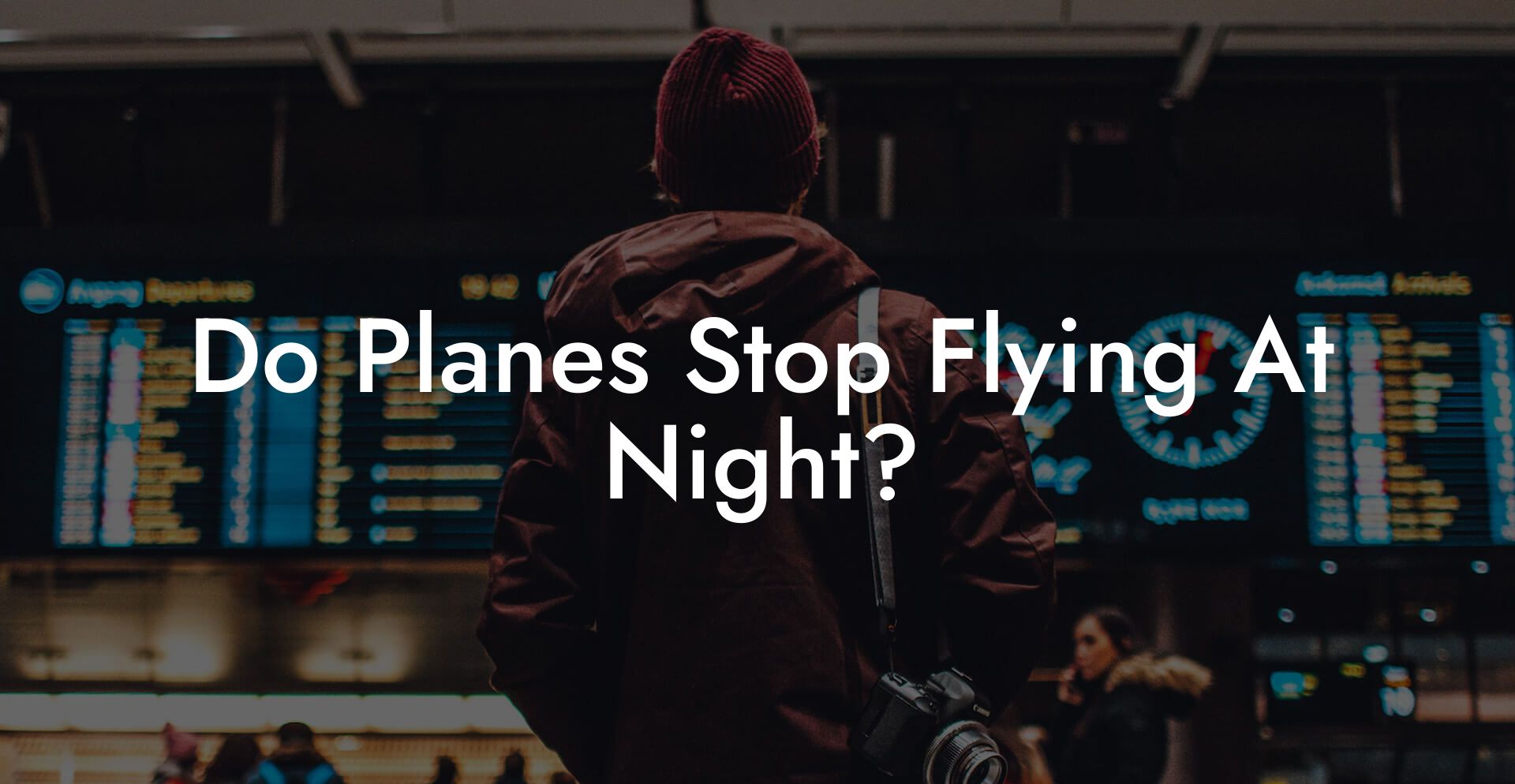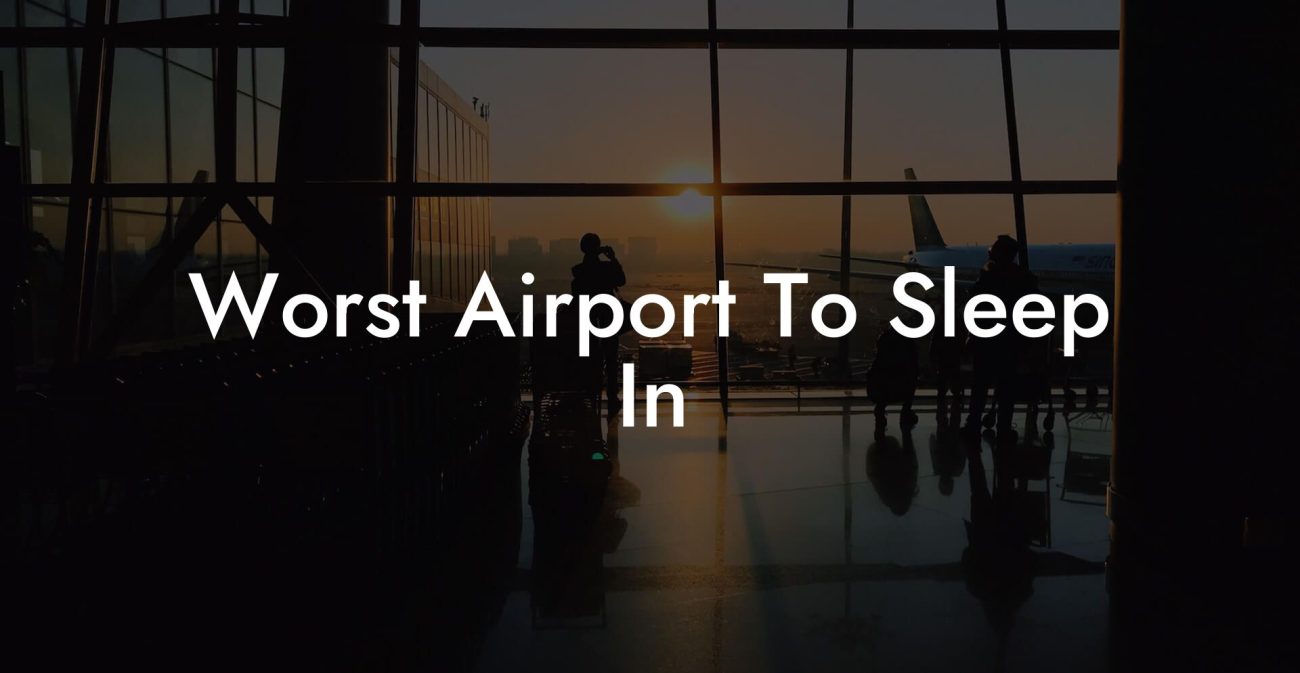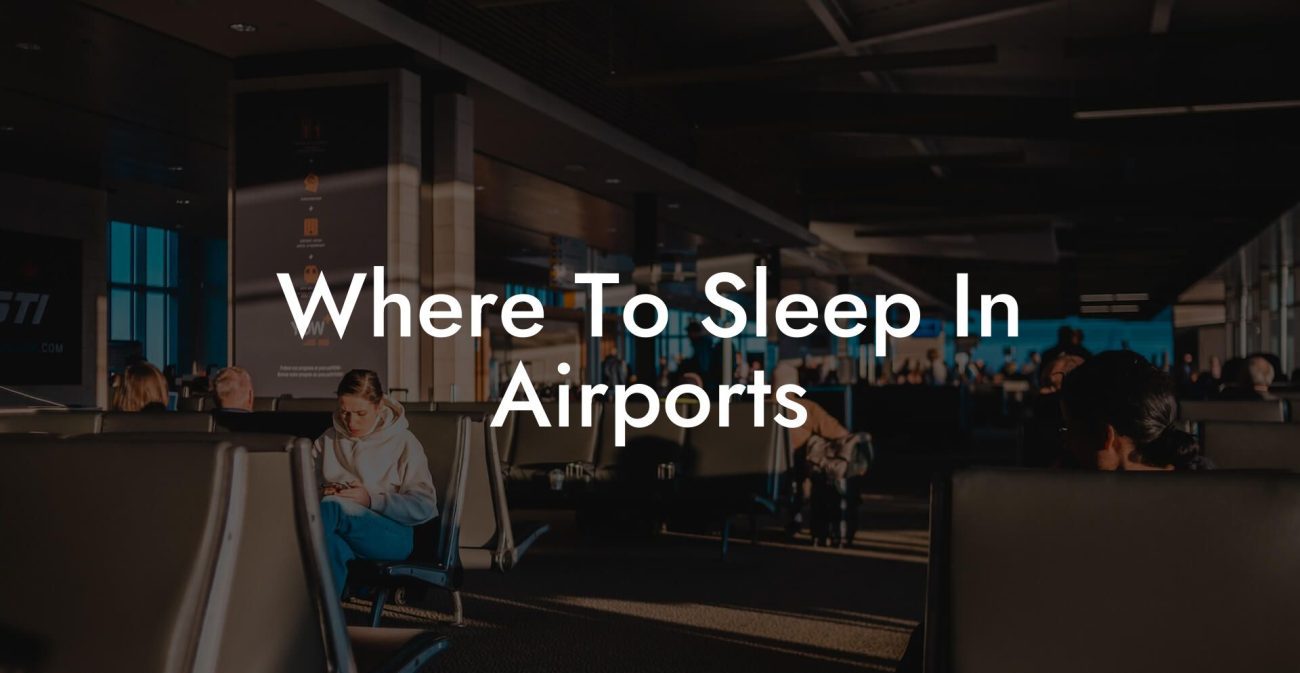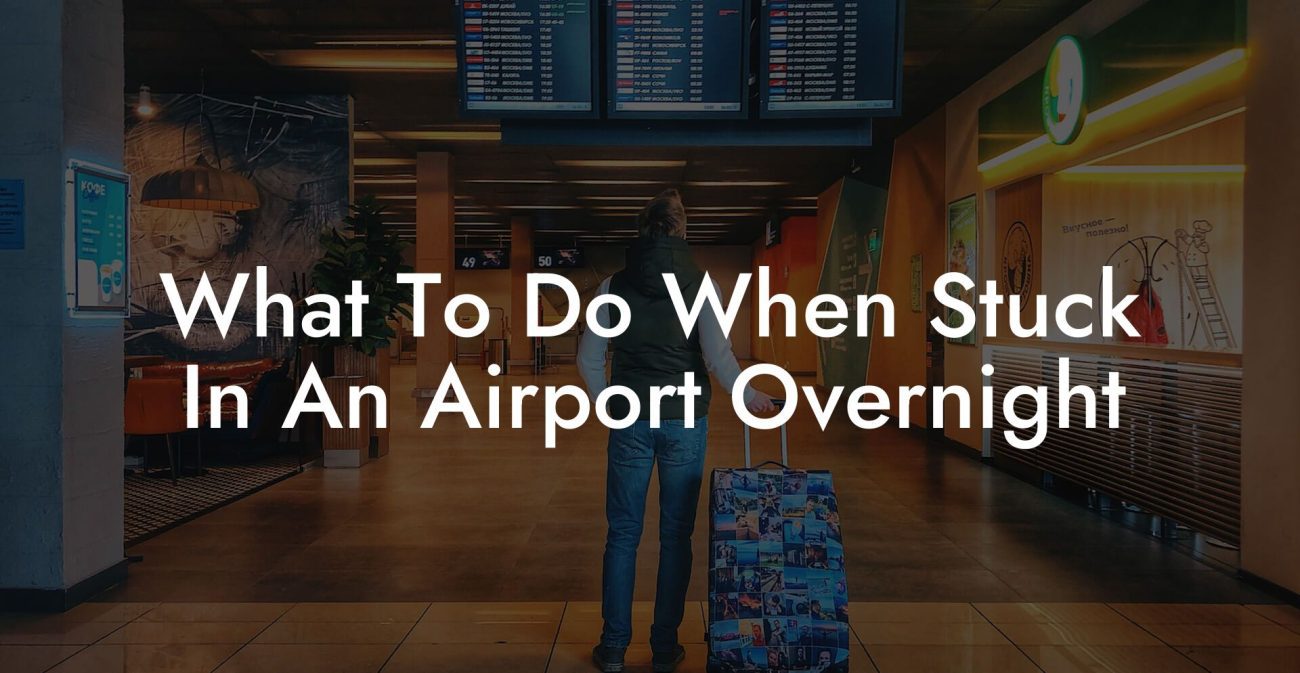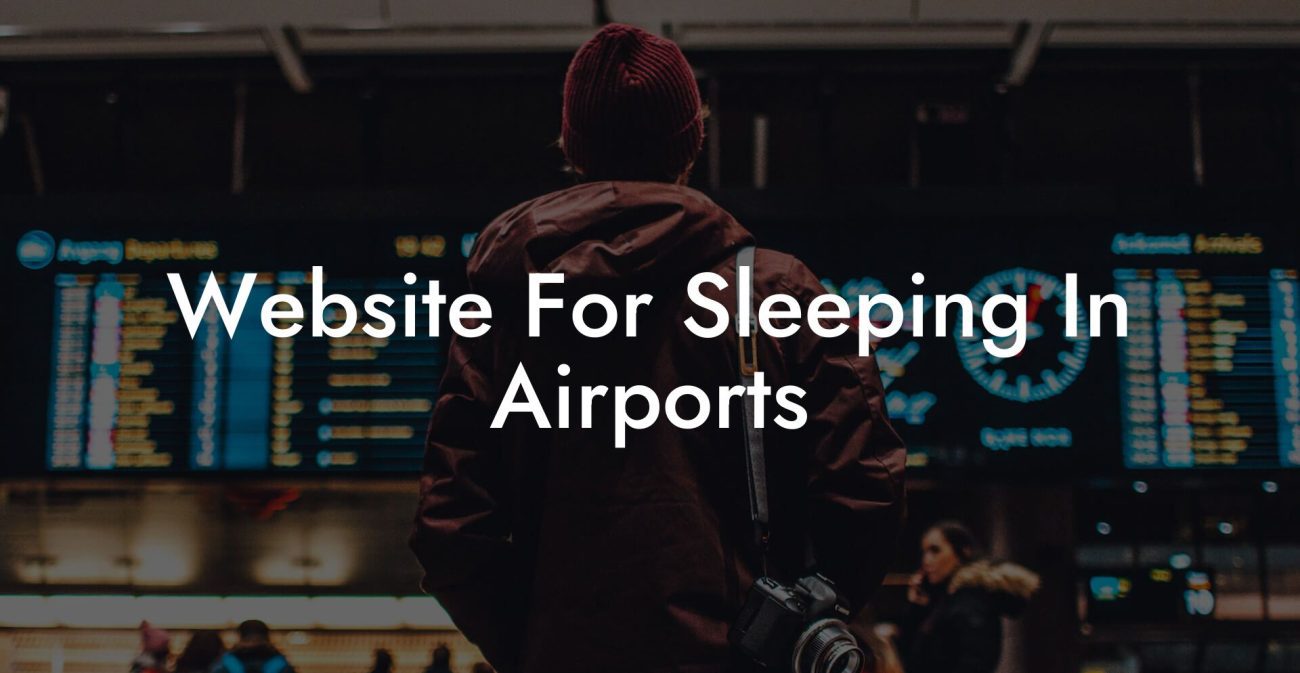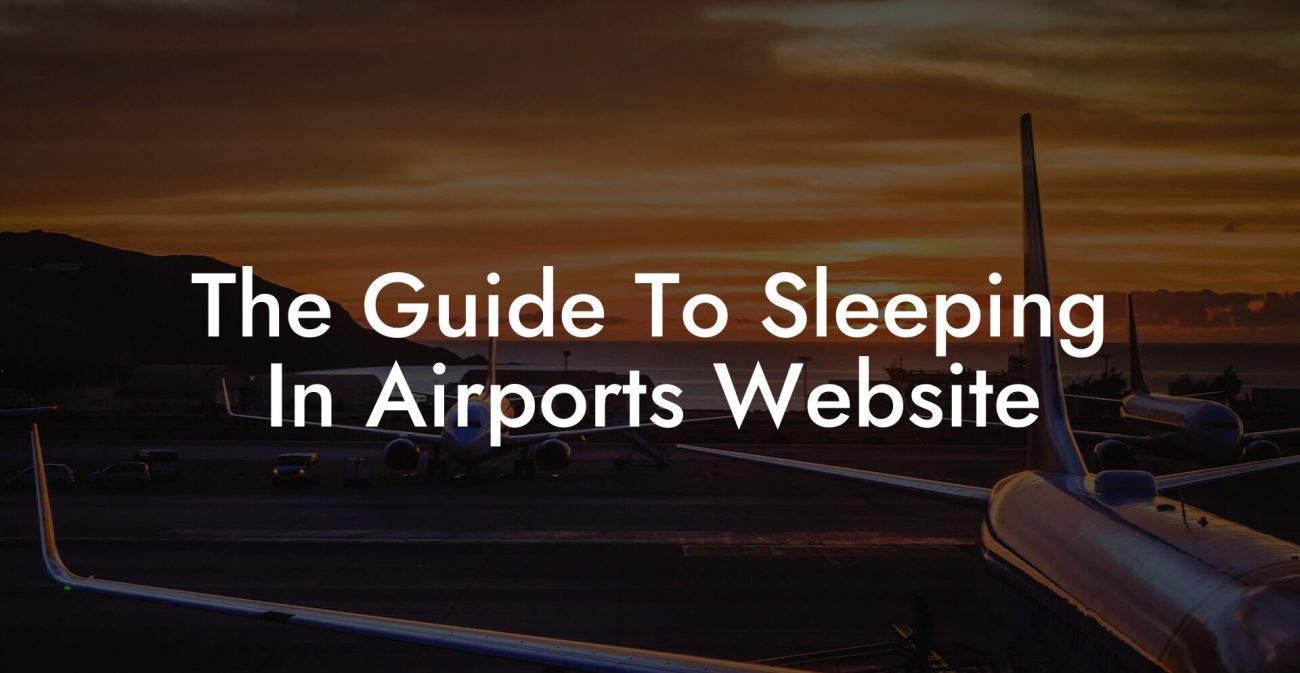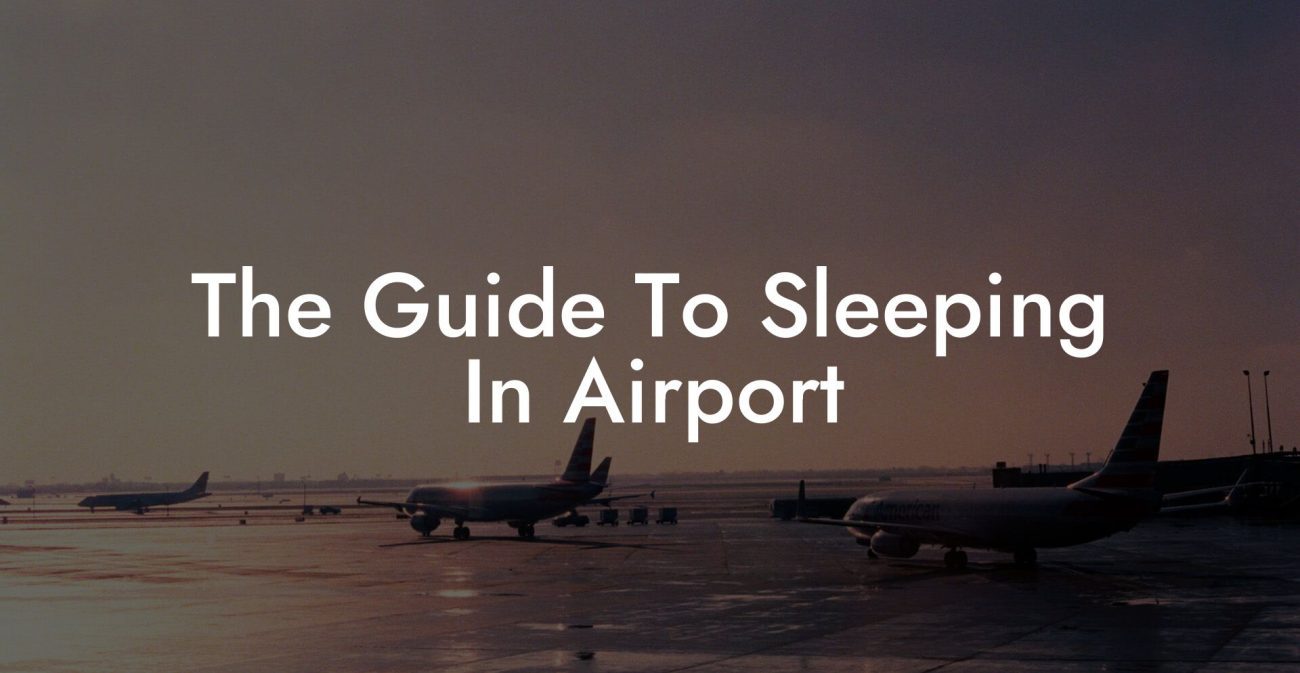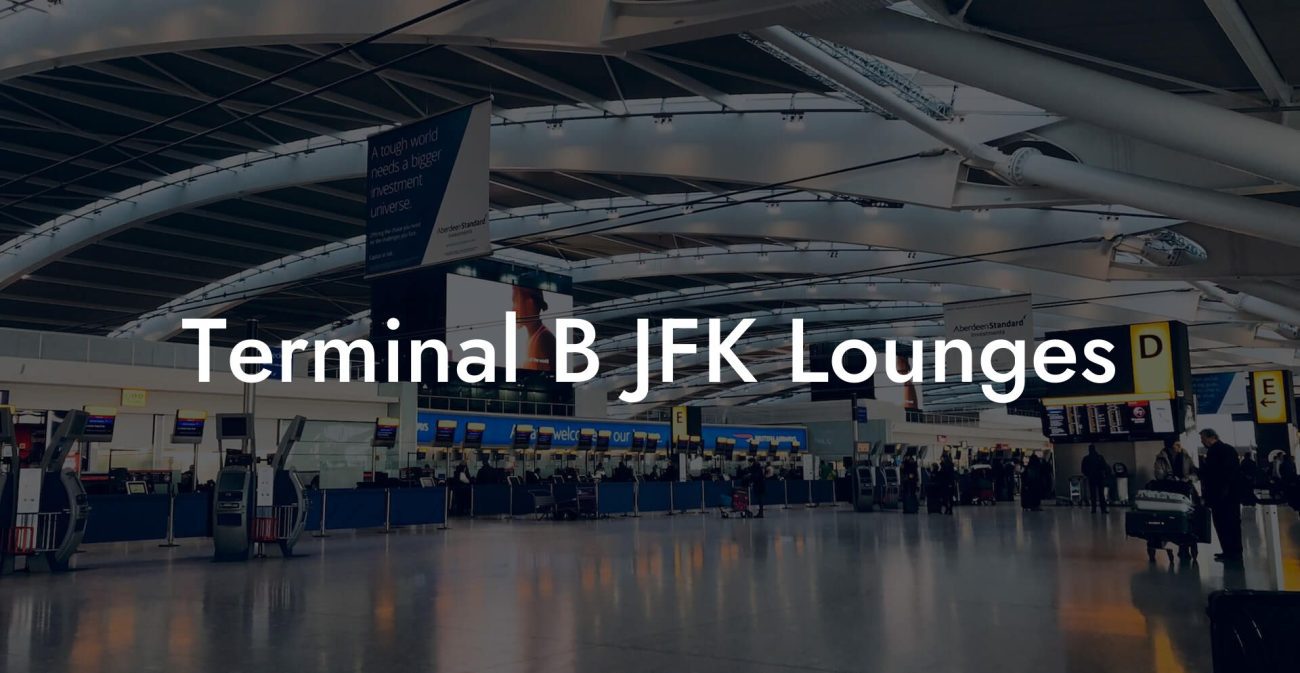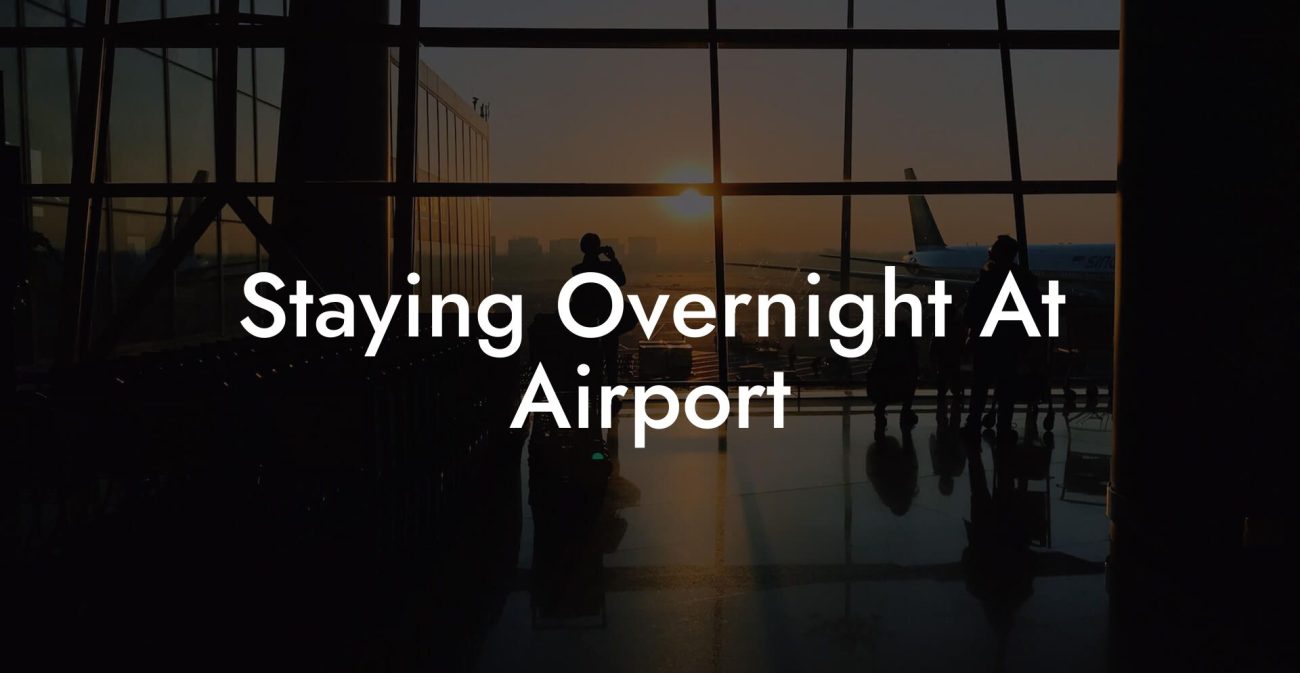Ever wondered if the skies hit the snooze button at night? Spoiler: planes don’t exactly clock out after sunset, but the nocturnal air travel world is full of quirks, surprises, and some seriously chill vibes that are perfect for anyone curious about sleeping in airports or snoozing in those futuristic airport sleeping pods. Buckle up for a wild ride as we delve into the ins and outs of night flights, unravel myths about curfews and airport closures, and drop some pro tips on making the most of those late-night terminal vibes!
Quick Links to Useful Sections
- Do Planes Really Stop Flying at Night?
- The Night Flight Phenomenon: Understanding the Why and How
- The Evolution of Nighttime Flight Operations
- Regulatory Rules and Nighttime Restrictions: The Real Deal
- The Impact of Night Flights on Travel Trends
- Nighttime Operations vs. Daytime Frenzy: What’s the Difference?
- Take a Closer Look: The Science Behind Night Flights
- Airport Sleeping Pods and the Art of Sleeping in Airports
- Air Travel at Night: The Pros and Cons
- Tech Innovations Transforming Night Air Travel
- Planning Your Next Night Flight: Tips and Tricks
- Exploring Global Variations: Night Flight Practices Around the World
- Resources and Community Support: Your Next Steps
- Night Flight Myths Debunked: Separating Fact from Fiction
- Your Journey to Empowered Nocturnal Air Travel
- Frequently Asked Questions About Night Flights and Airport Sleeping Pods
- Embrace the Night: Your Next Steps in Air Travel Mastery
Do Planes Really Stop Flying at Night?
Let’s cut to the chase: planes don’t magically vanish once the sun dips below the horizon. In fact, many airlines schedule a significant number of flights after dark. However, if you’ve ever found yourself prowling an empty airport at 2 a.m. wondering if any planes are actually flying, the confusion is understandable. While the skies are not on a strict “lights out” policy, operational, regulatory, and environmental factors do sometimes conspire to give the impression of a nighttime lull.
Over the decades, air travel has evolved considerably, and so have flight schedules. Some airports, mostly in residential areas or with noise restrictions, enforce curfews that restrict certain flights during late-night hours. But make no mistake—aircraft are still buzzing across the night sky, ferrying passengers on long-haul journeys or tactical repositioning flights for the next day’s departures.
The reasons behind these schedules are as varied as the destinations themselves. From noise abatement procedures and community noise ordinances to maintenance routines and slot restrictions, the low-key hustle of the aviation world after dark is a carefully choreographed dance designed to balance operational efficiency, passenger convenience, and neighborly quiet.
The Night Flight Phenomenon: Understanding the Why and How
To grasp why some airports seem eerily empty post-midnight, we need to dive a little deeper into the dynamics of aviation scheduling. At the heart of it all is the economics of air travel. Airlines aim to maximize the utilization of their fleets—meaning that for many long-haul routes, night flights are not only common but essential. These flights allow for overnight travel, so you can depart after dinner and land fresh in the morning, ready to seize the day.
On the flip side, airports located near residential neighborhoods or in cities with tight noise regulations may impose flight curfews. These curfews are about more than just keeping the neighborhood asleep—they help mitigate the environmental effects of noise pollution and reduce community disturbance. So while a plane might be ready for takeoff at 1 a.m., local regulations could require a delay until conditions are deemed acceptable.
Despite these limitations, major international hubs often operate around the clock. The world of air travel is global, and when one region is hitting the hay, another is just getting started. This interconnected web of scheduling means that even when your local airport appears quiet, somewhere far across the globe, skies are bustling with activity.
Additionally, some flights, especially cargo flights, predominantly operate at night. This minimizes congestion during peak hours, allowing passenger flights more breathing room during the day while also optimizing fuel efficiency and airspace usage when demand is lower.
The Evolution of Nighttime Flight Operations
Think night flying is a modern fad? Think again. The practice dates back to the early days of aviation when pilots and engineers had to navigate using primitive instruments and starlight as their guide. With tremendous advancements in navigation and communication technology, night flights gradually transitioned from daring adventures into a reliable and integral part of the air travel ecosystem.
Early aviation enthusiasts marveled at the sheer audacity of flying under the cloak of darkness. Pilots had to contend with limited visibility, making every flight a test of skill and nerve. Fast-forward to today, and night flights are a marvel of modern engineering: onboard radar systems, advanced autopilot functions, and state-of-the-art cockpit displays make flying at night as safe as it is efficient.
The evolution continued with the development of noise reduction technologies and improved aircraft design. Modern jets are engineered not only for speed and fuel efficiency but also for noise abatement, making night flights far less disruptive to those on the ground. Moreover, many airports now invest in innovative infrastructure that accommodates late-night operations without compromising the comfort of nearby communities.
Interestingly, this evolution has sparked a subculture among travelers. The allure of night flights isn’t just about arriving refreshed—it’s also about the unique, almost cinematic atmosphere that drapes the cabin during a dark sky journey. From the hum of the engines to the juxtaposition of in-flight entertainment against a star-studded backdrop, night flights evoke a sense of mystery and excitement that even the trendiest Gen-Z explorers can appreciate.
Regulatory Rules and Nighttime Restrictions: The Real Deal
Ever wonder why some airports appear to go into “sleep mode” at night, even though airlines are still operating flights? The answer lies in regulations and local ordinances. Governments and local communities work hand in hand with airport authorities to implement noise abatement procedures, which may include curfews and restrictions on certain flight operations during late hours.
Many airports designated as “noise-sensitive” are subject to strict operational windows. For instance, airports near densely populated urban areas often face regulations that limit the number of flights between midnight and 6 a.m. These measures are designed to reduce disturbance and improve quality of life for local residents.
It’s important to note that these restrictions aren’t an aviation conspiracy to deprive night owls of travel opportunities—they’re a balancing act between efficient air travel and community well-being. Moreover, some airlines adjust their flight schedules accordingly, optimizing routes and fleets to comply with local rules while still delivering on their promise of non-stop service.
While regulations might sound like bureaucratic red tape, they also lead to innovative solutions. For example, modern airports have introduced “quiet terminals” and dedicated nighttime passenger lounges complete with comfortable sleeping pods—catering directly to the needs of travelers with late departures or early arrivals.
The Impact of Night Flights on Travel Trends
Night flights have changed the travel game in more ways than one. For many globe-trotters, the convenience of departing at night means you can maximize your time at your destination. Instead of wasting precious hours in an airport waiting for a flight during daylight, night flights allow you to pack your itinerary with adventures, local cuisine, and spontaneous explorations.
Moreover, for the emerging crowd of digital nomads and millennials, the nocturnal flight schedule offers an opportunity to optimize productivity. Imagine catching a few hours of uninterrupted sleep—thanks to airport sleeping pods or well-researched sleeping-in-airport tips—while the plane glides through the darkness, all the while saving you time and money on hotel stays.
This shift in travel trends has also given rise to a vibrant online community of night flight enthusiasts. Forums, social media groups, and travel blogs are now teeming with insider tips on scoring the best deals for red-eye flights, hacks for comfortable airport sleeping, and reviews of the trendiest airport sleeping pods. The shared experiences create an energetic, supportive network for anyone who loves the idea of turning travel downtime into an adventure.
Many Gen-Z and millennial travelers find that the allure of sleeping in airports—especially when equipped with modern sleeping pods—is irresistible. These innovative pods offer privacy, security, and cozy comfort, making them a game-changer for last-minute travel plans or for those unavoidable layovers. In essence, night flights are not a relic of the past; they’re a modern evolution that caters perfectly to the needs of a diverse, on-the-go generation.
Nighttime Operations vs. Daytime Frenzy: What’s the Difference?
So, if planes don’t vanish at night, why does the travel experience feel so different compared to the busy, bustling energy of the daytime? The answer lies in the contrasting atmospheres created by light and dark. During the day, airports are at their peak: check-in counters are buzzing, security lines are long, and the overall energy is high. In contrast, the late-night scene is a quieter, more subdued affair.
The relaxed ambiance of nighttime airports offers certain perks. For instance, there’s often less congestion, shorter lines, and more peaceful surroundings that can be ideal if you’re planning to catch some shut-eye. In fact, many airport lounges have embraced the night vibe by enhancing comfort and tranquility—think dimmed lights, ambient music, and ultra-comfortable sleeping pods designed for those who value a good nap between flights.
On the operational side, night flights commonly benefit from lower air traffic, which can translate into smoother taxiing, fewer delays, and a generally less stressful travel experience. However, the flip side is that some services, such as dining options or retail outlets, might operate on reduced schedules or be temporarily closed. Travelers seeking a cozy late-night snack may need to plan ahead or rely on vending machines and grab-and-go selections.
Ultimately, whether you’re a fan of the bustling daytime vibe or the mellow quiet of late-night travel, each period has its own unique charm. And if you happen to be one of those slick Gen-Z or millennial travelers who can adapt to any environment, you might just find that the night holds a special kind of magic: the promise of adventure with a side of sleep.
Take a Closer Look: The Science Behind Night Flights
Beyond regulations and traveler preferences, there’s some pretty compelling science that explains why night flights are both viable and popular. For starters, the physics of flight remain constant whether it’s day or night. Modern aircraft are built to operate in all weather conditions and lighting environments, thanks to sophisticated onboard instruments and automated systems.
Pilot training and air traffic control protocols are on another level compared to the early days of aviation. Today’s pilots are adept at managing the challenges of reduced visibility using radar, GPS, and advanced communication systems. This means that the risks associated with night flights are kept to a bare minimum, making them as safe as, if not safer than, their daytime counterparts.
Additionally, studies have shown that traveling at night can sometimes positively influence your circadian rhythm. For frequent flyers, learning how to manage sleep cycles becomes an art form. While jet lag is an unavoidable side effect of long-haul travel, strategic napping—whether on the plane or in a well-equipped airport sleeping pod—can help reset your internal clock. This is particularly appealing to those travelers who view every part of the journey as a chance to recharge.
The interplay between technology, human physiology, and smart scheduling has allowed aviation to thrive, even when darkness falls. It’s a perfect example of how tradition meets innovation, ensuring that whether you’re traveling at 3 a.m. or 3 p.m., the experience is tailored to your needs and safety.
Airport Sleeping Pods and the Art of Sleeping in Airports
Let’s pivot to one of the hottest trends among night-time travelers: sleeping in airports. In the hustle of catching red-eye flights or enduring unpredictable delays, finding a comfortable place to rest can make all the difference. Gone are the days of awkwardly dozing on hard benches—today, many airports boast dedicated sleeping pods and lounges designed to turn a layover into a mini-retreat.
Sleeping pods are the lovechild of futuristic tech and genuine travel hack genius. Designed with privacy and comfort in mind, these compact pods offer a serene space for travelers to recharge. Equipped with features like adjustable lighting, climate control, charging stations, and even noise-cancellation technology, these pods have quickly become a hit among Gen-Z and millennial globetrotters looking to maximize every moment of their journey.
But what if your airport doesn’t have high-tech sleeping pods? Don’t fret! There are plenty of practical tips to ensure you catch those crucial Z’s in transit:
- Scout Ahead: Before your flight, research your airport’s amenities. Look for lounges, designated rest zones, and even transitional spaces that allow you to catch a quick nap.
- Pack Smart: Bring a travel pillow, an eye mask, and earplugs. These inexpensive items can transform any seating area into a cozy corner.
- Stay Charged: A power bank and universal adapter are essentials. After all, your favorite sleep playlist or audiobook might be the key to drifting off peacefully.
- Time It Right: Use flight apps to track your layover time accurately. Knowing exactly how long you have to rest will help you plan the perfect power nap.
- Respect Your Space: While airport sleeping areas are designed for relaxation, be mindful of your surroundings and safeguard your belongings.
With these insider tips, you can transform an otherwise stressful delay into an opportunity for rejuvenation. And who knows? That well-timed nap might just be the secret weapon to tackling your next big adventure.
Air Travel at Night: The Pros and Cons
Every coin has two sides, and night flights are no exception. For many, the benefits far outweigh the drawbacks, but it’s worth exploring both angles so you can decide if flying under the stars is your cup of tea.
Pros:
- Time Efficiency: Night flights let you use your daytime hours at your destination, maximizing productivity or leisure time.
- Less Congestion: With fewer flights vying for airspace, delays can be minimized and the overall travel experience is often more relaxed.
- Unique Travel Experience: There’s a certain magic in the experience of night travel—the twinkling lights below, the hum of the engines, and the sense of embarking on a mysterious nocturnal adventure.
- Comfortable Rest Opportunities: With the rise of airport sleeping pods and improved in-flight amenities, finding a good night’s sleep has never been easier.
Cons:
- Limited Amenities: Some airport services shutdown or operate on reduced schedules at night. Depending on your layover, this might mean fewer dining or shopping options.
- Potential Disruptions to Sleep Patterns: For those who are not night owls, adjusting to overnight flights can temporarily throw off your circadian rhythm.
- Cold Temperatures: Airports can sometimes be chillier at night. Be sure to pack a light jacket or blanket to stay warm while waiting for your flight.
- Navigation Challenges: For the uninitiated, moving through a dimly lit airport can be slightly intimidating. However, enhanced signage and friendly airport staff typically help mitigate this concern.
When weighing these pros and cons, it ultimately comes down to your personal travel style and priorities. If you’re the kind of traveler who embraces the night as part of the adventure, then the benefits will likely resonate more than the drawbacks.
Tech Innovations Transforming Night Air Travel
The future of night flights is bright—quite literally—with a host of technological innovations designed to enhance safety, comfort, and convenience after dark. Modern airliners are now outfitted with dynamic lighting systems that automatically adjust the cabin ambience to mimic natural day-night cycles, helping to ease jet lag and promote better sleep.
In addition, the integration of real-time flight tracking and predictive analytics means airports and airlines can more efficiently manage late-night schedules. This level of technological sophistication not only optimizes flight operations but also ensures that passengers receive timely updates on delays, gate changes, or sudden schedule adjustments.
Augmented Reality (AR) and AI-powered travel apps are becoming popular tools for navigating sprawling airport terminals at night. These tools offer everything from indoor maps to personalized recommendations for the best sleeping spots, dining options, and even local weather updates. If you ever feel lost in a dark terminal, your smartphone might just be your guiding star.
With these tech marvels in play, night travel isn’t just a relic of the past—it’s a rapidly evolving landscape where innovation meets comfort, ensuring that every night flight is smooth, safe, and downright enjoyable.
Planning Your Next Night Flight: Tips and Tricks
Ready to embrace the magic of flying after dark? Here are some essential tips to make sure that your next night flight turns into a memorable, comfortable journey:
- Choose Your Seat Wisely: Aim for a window seat if you enjoy gazing at the city lights and starry skies. If you’re planning to sleep, consider seats that recline fully and provide ample space.
- Download the Right Apps: Flight tracking, relaxation, and meditation apps can help keep you informed and relaxed during your journey.
- Pack Comfort Essentials: A neck pillow, cozy travel blanket, and noise-cancelling headphones can transform your cabin from a cramped space into a cozy cocoon.
- Plan for Airport Rest: Whether you’re lucky enough to book an airport sleeping pod or need to scout out that hidden lounge, plan ahead to ensure you have a designated rest spot during unexpected delays.
- Stay Hydrated but Mind the Caffeine: Hydration is key for combating jet lag. Opt for water-rich snacks and avoid excessive caffeine, which might interfere with your sleep.
With these tips in your back pocket, you’ll be well on your way to mastering the art of night travel—turning potential downtime into a rejuvenating part of your trip.
Exploring Global Variations: Night Flight Practices Around the World
The approach to night flights varies dramatically depending on where you are in the world. European airports, for example, often have strict night curfews, especially around residential zones. In contrast, hubs in the Middle East or North America tend to operate on a near 24-hour schedule, prioritizing efficiency and global connectivity.
In Asia, the fusion of ultra-modern airport designs and traditional practices creates a uniquely balanced environment. Some Asian airports incorporate lush indoor gardens and quiet zones that serve as natural retreats for night-time travelers, blurring the line between terminal and sanctuary.
These global variations highlight the adaptability of air travel to meet local needs while still catering to international schedules. No matter where you are, the essentials of sleep-friendly airports—innovative sleeping pods, quiet rest zones, and tech-enhanced travel apps—remain a significant part of the night flight experience.
So whether you’re jet-setting from Tokyo, London, or Los Angeles, remember that each airport and region brings its own flavor to the night flight adventure, ensuring your travel experience is as diverse as it is thrilling.
Resources and Community Support: Your Next Steps
Armed with new knowledge on the mysteries of night flights and the secrets to catching quality Z’s in airport sleeping pods, your journey to optimized travel experiences is just beginning. Explore the following resources and connect with fellow travelers who share your passion for nocturnal adventures:
- Travel Blogs & Forums: Dive into communities on Reddit, FlyerTalk, and niche travel blogs where fellow globetrotters discuss the best tips for airport naps, flight hacks, and destination reviews.
- Airline Apps and Websites: Check out the latest developments in airline operations and tech innovations that can enhance your travel experience—many offer exclusive guides on optimizing sleep during night flights.
- Sleep Coach Platforms: Believe it or not, some sleep coaches now specialize in travel sleep optimization, providing tailored advice on how to recharge your batteries during red-eye flights or in unfamiliar airport lounges.
- Airport Review Sites: Platforms like Sleeping in Airports and Airborne Living offer reviews and ratings of airport sleeping pods, lounges, and quiet zones across major travel hubs.
- Social Media Groups: Join Facebook groups, Instagram communities, and TikTok channels dedicated to travel hacks, night flight experiences, and the best tips for sleeping in airports.
Engaging with these communities not only provides practical advice but also connects you with a network of like-minded adventurers ready to share stories, recommendations, and support. Your next step is simple: get out there, ask questions, and build your own repository of insider travel wisdom.
Night Flight Myths Debunked: Separating Fact from Fiction
There are plenty of myths floating around about night flights. Do they increase the risk of turbulence? Are cabin crews more prone to errors after dark? Let’s bust these myths once and for all.
Myth #1: “Planes are less safe at night.”
Reality: Night flights adhere to the same rigorous safety protocols as daytime flights. Modern navigation and communication systems, along with continuous air traffic monitoring, ensure that flying after dark is just as safe.
Myth #2: “You can’t get decent sleep on a night flight.”
Reality: With the right travel gear, booking strategies, and exploiting airport sleeping pods, passengers can indeed catch quality z’s even on a red-eye flight.
Myth #3: “Airports are deserted and unsafe at night.”
Reality: Major airports are well-lit, staffed round-the-clock, and continuously monitored for safety. While the vibe differs from day to night, travelers remain secure and are often more relaxed due to lower commuter stress.
As with many things in travel, separating legend from fact empowers you to make informed decisions. The more you understand how and why operations adapt to night conditions, the better you can plan your journey and debunk the myths that might hold you back.
Your Journey to Empowered Nocturnal Air Travel
The world of air travel after dark is a blend of cutting-edge technology, smart scheduling, and creative solutions that cater perfectly to modern lifestyles. From the science behind safer night flights to the comfort of airport sleeping pods that feel more like a personal oasis than a terminal bench, nocturnal travel is continuously reinventing itself for the benefit of every adventurer.
Whether you’re a digital nomad looking to reclaim daytime for work and play, a Gen-Z explorer chasing out-of-the-box travel experiences, or a millennial reconciling the demands of a busy life with a passion for adventure, the night holds promise. Embrace the quirks, debunk the myths, and let your curiosity guide you as you discover that planes might not stop flying at night—but your journey into the heart of nocturnal air travel is just beginning.
Every night flight is a voyage into a quieter realm where technology meets comfort and where careful planning meets serendipitous moments of rest and renewal. Your next red-eye might just be the gateway to a world of unforgettable experiences—so adjust your sleep schedule, pack your travel essentials, and prepare to soar through the night on wings of innovation and adventure.
Frequently Asked Questions About Night Flights and Airport Sleeping Pods
Here are some of the most burning questions travelers have about night flights, airport sleeping pods, and the overall dynamics of air travel after dark.
1. Do planes really stop flying at night?
No, planes continue flying during the night. Although some airports implement curfews due to noise regulations, many flights operate around the clock—especially long-haul and cargo flights.
2. Why do some airports have nighttime curfews?
Many airports located in noise-sensitive areas enforce curfews to reduce disturbances for nearby residents. These regulations balance the need for efficient air travel with community well-being.
3. Are night flights safe?
Absolutely. Night flights use the same safety protocols and advanced technologies as daytime flights, ensuring a secure and reliable travel experience.
4. How can I sleep better on a night flight?
Choosing a comfortable seat, using sleep aids like eye masks and neck pillows, and booking flights with sleep-friendly benefits such as quiet cabins or dedicated sleeping pods can help improve your in-flight sleep.
5. What amenities can I expect at airports during late-night hours?
While some services might be limited, many major airports offer lounges, resting zones, and innovative sleeping pods designed specifically for late-night travelers.
6. How do airport sleeping pods work?
Airport sleeping pods are compact, private spaces equipped with amenities like adjustable lighting, climate control, and charging ports. They offer a comfortable resting place for travelers during long layovers or delayed flights.
7. Can I find smartphone apps to help optimize night flight experiences?
Yes, a variety of apps provide flight tracking, terminal maps, and even guided meditation or sleep hacks to ensure you get the most out of your night flight.
8. Are there economic benefits to flying at night?
Night flights often come with cost benefits such as lower airfares, less crowded terminals, and reduced travel times, making them an attractive option for budget-conscious travelers.
9. How do airlines schedule night flights without disrupting maintenance routines?
Airlines strategically plan their schedules to allow for maintenance during off-peak hours, ensuring that aircraft are efficiently utilized while remaining in top condition.
10. What should I pack for a comfortable night travel experience?
Bring along essentials such as a travel pillow, eye mask, noise-cancelling headphones, adequate hydration, and healthy snacks to ensure you’re ready to rest and recharge.
Embrace the Night: Your Next Steps in Air Travel Mastery
The nocturnal world of air travel is your ticket to optimizing every minute of your journey. With night flights, innovative sleeping pods, and a treasure trove of insider tips, you’re empowered to turn any layover into a restful retreat and every red-eye into an adventure. Embrace the thrill of the night sky, and let the subtle charm of after-dark travel redefine the way you explore the world.
Whether you’re tweaking your travel routines for that extra edge in productivity, seeking the ultimate airport sleep hack, or simply curious about the fascinating mechanics of night flights, you’ve got a universe of information at your fingertips. The skies are open 24/7, and your journey—both in the air and on the ground—is constantly evolving.
So next time you’re booking a flight, remember that night isn’t just the absence of daylight—it’s a canvas for innovation, relaxation, and a truly unique travel experience. Dream big, sleep smart, and let the night guide you to new horizons.
Useful Interruption: Dive deeper into the world of airport sleeping guides with our most popular sections. If there is anything you think is missing or anything you would love for us to write about, just give us a shout.
- General Airport Sleeping Guides
- Travel Gear & Equipment Recommendations
- Regional and Airport-Specific Guides
- Airport Sleeping Pods & Reviews
- Health, Safety, and Comfort Tips for Airport Sleepers
Last week, I decided to try the world-famous "airport sleepover" experience. Imagine this: I'm lying on a bench in Terminal C, surrounded by suitcases that have seen more of the world than I ever will, and a PA system that sounds like a karaoke machine on a sugar rush. I pull out my travel pillow—which, by the way, is more like a sad deflated balloon—and declare, "Tonight, I’m the king of this terminal!"
Soon enough, fellow travelers become my unexpected audience. One guy, fresh off a red-eye, whispers, "Hey, do you think if we sleep long enough, we can catch our flight in our dreams?" I reply, "Sure, and maybe I'll even get an upgrade to first-class in my nap!" The airport lights flicker like a disco ball, and every time someone announces a delayed departure, it’s like a punchline to our impromptu stand-up routine.
As I finally drift off, I dream of a world where boarding passes are like VIP tickets to the best sleepover party ever—a party where the only baggage is the laughter you carry with you. Waking up, I realize the airport is still the same, but I now hold the honorary title of "Terminal Comedian," a title I wear with as much pride as my permanently mismatched socks!

